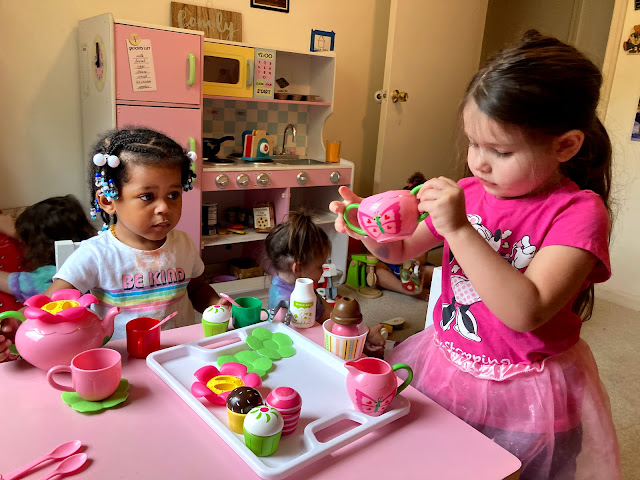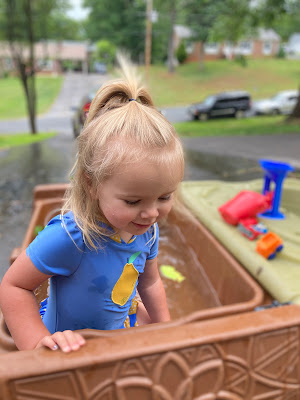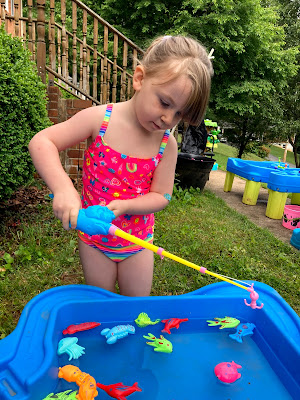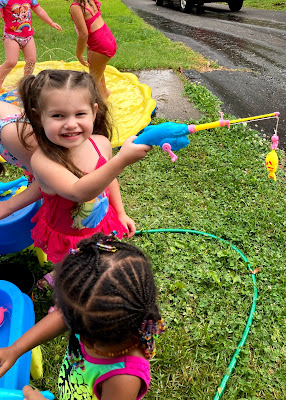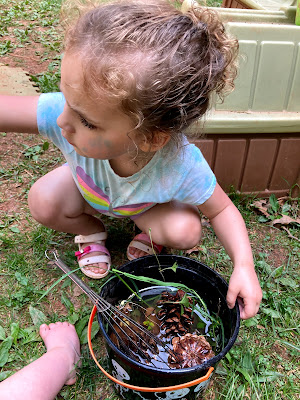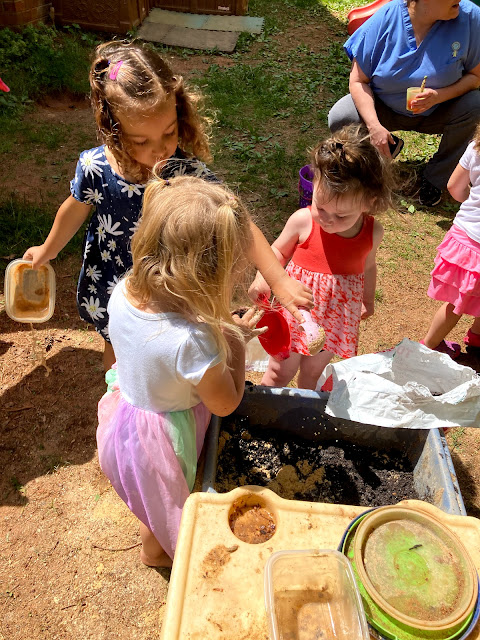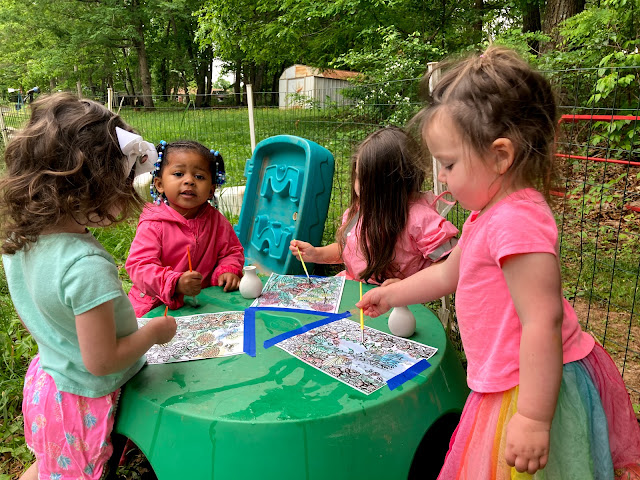1. Play with SOUND! So much of decoding words in the future starts with careful listening in early childhood.
2. SOUND Explore Tables: this table had all things beginning with the /b/ sound. Simply naming the objects in the Explore Table produces natural opportunities to HEAR alliteration. Some of the things in this set up included "beach sand," books, bears, bugs, butterflies, balls, buttons, large beads, flashcards with B words and letter, and blocks.

In addition to objects beginning with the /b/ sound, hidden magnet B letters and wooden letter B's were in the "beach" to be found and touched as well. Finally, as we played, we made stories with the toys, like: "The blue bears sit on buttons around the bead table. They are having bumblebee soup!" or "Bugs are riding on the bus all the way to the beach!"
3. Chatting with friends! It's true that this is a pre-literacy skill because conversation with peers and adults help children's vocabulary grow which is required for reading comprehension in the future.
Role play isn't a waste of time! It's a natural opportunity to talk, assume the role/feelings/behaviors of another person or animal, and develop cognitive and language skills.
4. Rhyming pups: we love playing with puppies and kitties! These toys made by Learning Resources allow us to make mis-matched rhyming pups which are terribly silly! When we fix the pups, we HEAR two words that rhyme correctly. (See how much hearing factors into literacy?)
5. Letter names, recognition, and shapes: Letters are symbols for SOUNDS, and as children develop, they memorize the names and sounds of each letter. Pre-literacy includes being able to see different kinds of lines that make up letters. Some letters have "holes." Some letters are completely curvy. Other letters are made up of straight lines that go in different directions. This peg toy by Coogam helps children look at what kinds of lines make up a letter, and focus their attention on which direction those lines are going.
6. Read a book, and act it out! Caps for Sale became a huge hit for our kids last week, and we used our rug cushions to pretend to be cap peddlers. Acting out a story demonstrates the ability to recall the order of events in a story, and understand the plot of the story. Both skills are critical for reading comprehension.
7. Read for fun! During Work Time, the children often choose to look at books or invite the teacher to read them individually. Young children can identify the difference between pictures and texts, tell their own version of the story based on pictures, and ask for help to know "what do these words say?".
8. Gross motor development: This seems to be an unusual skill set to include with pre-literacy development, but they are connected. The brain learns to integrate information from multiple senses (visual, tactile, vestibular, proprioceptive, and even auditory) through gross motor opportunities. As the senses become more integrated, the child develops the ability to focus their eyes on targeted words on a page, track words across a page, and even keep letters oriented and in the correct order while reading. Without well developed coordination and balance, decoding and tracking words becomes SO laborious for the reader, that reading comprehension becomes nearly impossible.
So climb, and dance, and run, and crouch, and jump as much as possible.
9. Scanning: this Melissa and Doug toy is intriguing to young children because they enjoy the cause and effect of dropping in the spool and see it spin down the ramp, but this also helps the children develop the ability to track an object moving left to right and back again.

10. Drawing: The children have free access to the Art Area during Work Time and are provided multiple choices for mark making (paint, markers, crayons, pencils). The advantage of free form mark making is that it engages more areas of the brain than tracing does. Here is a sample piece of art done by one of our two-year olds that demonstrates she is developing the ability to draw curves, straight lines, circles, and dots. These are all lines she will later learn to associate with letter shapes, and are a precursor to writing. Furthermore, she is learning that marks have meaning.
It seems like "just play," but each of these distinct (yet related) methods of developing pre-literacy skills are
fundamental for children to experience prior to formal academic education. How can you bring more of these ideas into your home and environment? :)







